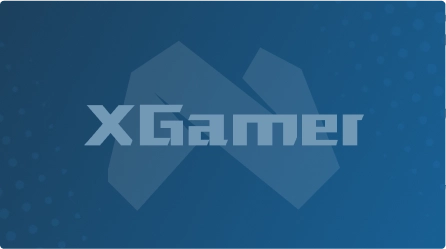
Total Chaos Review – A Haunting Catharsis
Reviewed on:
PC
Platform:
PlayStation 5, Xbox Series X/S, PC
Publisher:
Apogee Entertainment
Developer:
Trigger Happy Interactive
Rating:
Mature
Total Chaos’ headlines over the years as a public-facing project center on it being a total conversion mod for Doom II. After more than a dozen hours with it, that’s the least interesting aspect of this game. Total Chaos is about one man’s escape from an isolated and desolate coastal mining town run amok by a rotting disease that’s infected both his mind and the very town itself. Its story is vague and mysterious, but reveals itself plainly in metaphor as a fight against cancer, leaving a particularly personal mark on me as someone who’s lost family to that terrible blight. Though the voice acting sometimes fails to match the narrative momentum, the combat, with its heavy emphasis on crafting makeshift weaponry, remains an experimental blast through the end, especially for those nostalgic for the joyous gameplay feel of Doom II. Like the blood and guts that fuse to create the unholy monsters that fill its action-heavy moments, that story and combat come together to deliver a catharsis of destruction I was delighted to be part of.
Fort Oasis, the aforementioned mining town, was once a vibrant community of industry, with hotel balconies overlooking the sea, shopping malls for spending hard-earned bucks, and all the frills of a place to call home. However, when a rot settles in, what was once home becomes a prison of torment for protagonist Tyler. I enjoyed the mystery surrounding Tyler’s plight from location to location here, and his attempt to come to terms with what’s gone wrong, and though it’s easy to miss, its wall writings and metaphorical developments speak to something dark festering deep within the mines of Fort Oasis. That something – cancer – spoke to me, forcing me to analyze why Total Chaos is so adamant about its exhausting, torturous carnage. Tyler is tearing through an insidious rot on Fort Oasis, yes; but he’s also ripping through the cancerous cells that threaten his existence. The slaughter must not stop.
There are shotguns, pistols, a submachine gun, and even a harpoon gun, but ammo is so limited that you’ll never feel too comfortable using them, and this acts as a smart way to emphasize Total Chaos’ crafted melee weapons. As you explore abandoned and decrepit jails, plazas, apartment buildings, cemeteries, and more, you’ll collect nails, hammer heads, pickaxes, wooden poles and handles, lead pipes, wrenches, rebar, bottles, rags, and more, including various types of food and drinks. All of these pickups can be mixed and matched with each other, and the more than 30 recipes offer deadly melee combinations and beneficial chemical compounds to heal, stop bleeding, and more. The meat of the game is this crafting system, and it provides the most gameplay variety of the experience. However, the bones that Total Chaos is built upon sometimes break, leading to moments of frustration. Void of automatic saves like the survival horror games it’s so clearly inspired by, you can only save at vinyl record players that always feel placed just a bit too far from the places your progress is likely to be stopped with an untimely death. I lost a few hours because of this save system, thanks to instant-death segments that feel impossible to nail on the first go. As low as those moments feel, other moments, like a haunted house of hanging bat-like creatures that can only be stopped by the flicker of your lighter’s flame, go far to make you forget those problems exist.
Between those highs and lows, there are the typical gameplay trappings of the genre, including bog-standard puzzles and predictable search-action walkbacks, and they round out an otherwise fantastic experience with moments that land as fine, nothing more and nothing less. Regardless, dealing with the various symptoms of Tyler’s health adds tension to Total Chaos’ best and worst moments. Managing health, bleed, hunger, energy, and stamina in the quiet moments served as a reminder that this was not an oasis for Tyler, despite what his home is called; instead, it’s a torture chamber he must survive. And in the louder moments, these symptoms used gameplay to further heighten the cacophony of stress Total Chaos vomits onto Tyler. Another symptom he deals with, called madness, is underused but alters moments drastically, going far to impose on the player the self-doubt and paranoia Tyler constantly feels. Total Chaos is disgusting, bloody, and taxing, but it’s also sympathetic and cathartic. And despite its misgivings and missteps, it is fun, twisting together horrific perversions with tension-filled gameplay in the way every great survival horror game should. Poor voice acting and repetitive gameplay/monster design dampen what makes Total Chaos great. However, its inventive crafting-focused combat and stirring story cement Trigger Happy Interactive’s sophomore release as one that will surely haunt my thoughts long after this playthrough.
Score:
8
About Game Informer's review system
 Popular Content
Popular Content Explore Topic
Explore Topic



